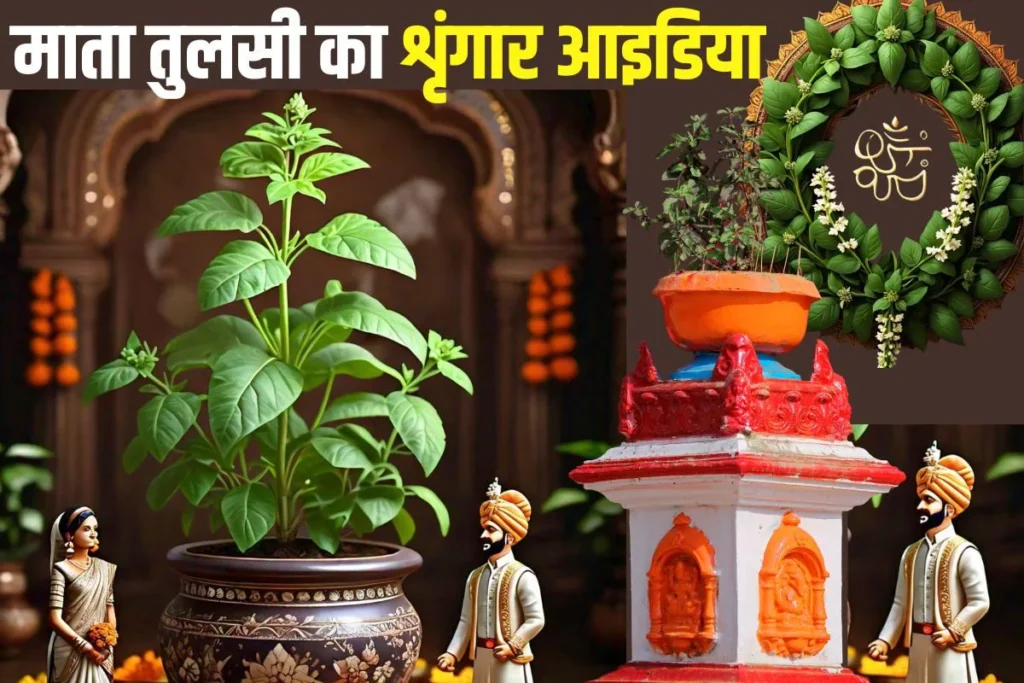Tulsi Vivah is the worship of Lord Tulsi, married to Goddess Shaligram, a form of Lord Vishnu. The ritual takes place on Dev Uthani Ekadashi, which is also known as Devotthan Ekadashi or Prabodhini Ekadashi. This is that day when Lord Vishnu emerges from his yogic sleep of Chaturmas, with whom he had rested for four months. It is believed that the awakening of Lord Vishnu starts auspicious events and brings fortune to the people who observe this ritual. Let‘s know the auspicious timings, elaborate puja vidhi (worship procedure), and the spiritual significance of this reverenced ceremony.
Tulsi Vivah 2024 Date and Timing
In 2024, Dev Uthani Ekadashi falls on 12 Nov. The Ekadashi Tithi or the eleventh lunar day from the Hindu Panchang (almanac) starts at 6:46 p.m. on November 11 and ends at 4:04 p.m. on November 12. Thus, the important ceremony of Dev Uthani Ekadashi and Tulsi Vivah also falls on 12 November.
The muhurat for the Tulsi Vivah puja in 2024 is Pradosh Kaal time, between 5:29 p.m. to 7:53 p.m. It is believed that if the ceremony is performed within this time, then the religious blessings will be all the more.
Tulsi Vivah Importance
Tulsi Vivah is a very sacred ritual of Hindu religion. According to Hindu mythology, when Lord Vishnu wakes up from his slumber of Chaturmas, all gods and goddesses gather before him for his worship. According to legend, Tulsi by mere being the consort of Lord Vishnu in the form of the Goddess Lakshmi is said to purify and bring blessings upon the household. This Tulsi Vivah is said to ward off all marital obstacles and bring harmony to family life. Due to this, people who have a difficult time with their marriages or who are experiencing delay in finding their life’s mate observe this ritual.
The Tulsi Vivah ceremony is deemed equal to the sacred kanyadaan, or the ritual giving away of a daughter in marriage, which bears its own value of spiritual merit. It is believed that all sufferings will be relieved, and it fetches the benevolence from the Lord Vishnu by performing this ritual.
Tulsi Vivah Puja Vidhi (Procedure of Worship)
The Tulsi Vivah ceremony requires extensive practice with strict observance of traditional customs. Here are steps to this sacred ritual:.
1. Decoration of Sacred Altar and Mandap for Tulsi Vivah
On the day of Dev Uthani Ekadashi, decorate your home or temple area with beautiful mandap (canopy) around the Tulsi plant.
Mango or banana leaves, flowers, and garlands are used to adorn the altar. Make preparations in the form of sweets, fruits, and diyas lit for the ceremony.
2. Decorations of Tulsi Plant
Decorate the Tulsi plant with a small sari or cloth dressing, and other ornaments with bangles put on the branches.
A devotee installs Shaligram stone or the idol of Lord Vishnu as groom near the Tulsi plant, dressed with crown and garland
3. Ritual Worship and Puja Offering
Open the wedding by lighting incense and lamps and by asking Lord Ganesha to drive away all the obstacles.
Tulsi and Shaligram are also considered a divine couple so pay them respect by offering them haldi-kumkum, rice, flowers, and some sweets.
Religiously it is very important to recite the Vishnu Sahasranama (a thousand names of Lord Vishnu) and Tulsi Namastaka that showers reverence on the virtues and blessings of Goddess Tulsi.
4. Wedding Rites
Similar to a regular Hindu marriage, the priest or head of the family chants the marriage mantras while passing in a circular movement around the Tulsi plant and Shaligram together in the mandap. This symbolizes the sacred union of the divine couple.
This includes the rituals of tying a knot of marriage between the sari of Tulsi and the dress of Shaligram.
5. Conclusion
Conclusion: End the marriage by giving aarti to Tulsi and Shaligram and distribute prasad among family and friends.
After the ritual, devotees make individual prayers praying for happiness, harmony, and the blessings of God in their house and life of the family.
Tulsi Vivah Mantras
Some mantras are recited during Tulsi Vivah while performing the ritual. Some of the essential mantras are:
Tulsi Devi Mantra
Devi Tvam Nirmitaa Poorvam Architaasi Muneeshwaraih |
Namo Namaste Tulsi Paapam Hara Haripriye ||
(“O Tulsi, created by the sages, adored by the wise, I bow to you. O beloved of Hari, destroyer of sins, I salute you.”)
Tulsi Prarthana (Prayer)
Om Subhadraya Namah, Matas Tulsi Govinda Hridayananda Karini,
Narayanasya Poojyartham Chinomi Tvam Namostute ||
(Translation: “I bow to you, Tulsi, who brings joy to the heart of Lord Govinda and bestows auspiciousness and joy.”)
Tulsi Dhyan Mantra
Om Shri Tulasyai Vidmahe |
Vishnu Priyaya Dhimahi |
Tanno Vrinda Prachodayat ||
(Translation: “We meditate upon Tulsi, the beloved of Lord Vishnu, may she inspire and guide us.”)
Spiritual Benefits of Tulsi Vivah
Tulsi Vivah is another way of celebrating the return of Lord Vishnu, hereby marking the resurrection of all the auspicious ceremonies as well as good deeds. The spiritual benefits of performing this ceremony are numerous and include:
Offering worship of Tulsi Vivah, purification of the mind and body, as well as inviting divine protection.
Tulsi Vivah provides blessings for a well-balanced married life. As if Tulsi Vivah calms down most of the obstacles relating to marriage.
Tulsi Vivah brings a blessing of divine prosperity for the devotees, whether it is family life or personal life.
Conclusion
Tulsi Vivah on Dev Uthani Ekadashi, is that special occasion which invokes devotion, tradition, and faith together. It is not only the marriage of two divine figures but also a mode of seeking harmony and good fortune and happiness in life. By sincerely performing the ritual of Tulsi Vivah, the devotees will be able to experience divine grace and upliftment hence it forms an important part of the Hindu calendar of worship.

